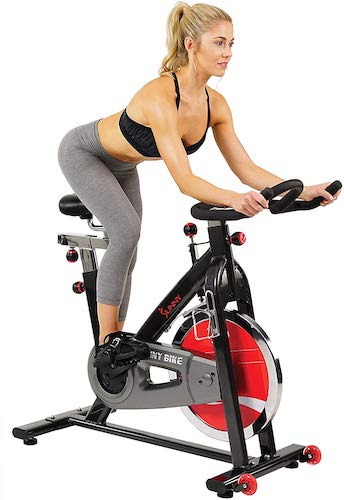Why Interval Training Works

The following unfortunate scenario plays out in many gyms: people push themselves through a 40 – 60 minute workout on the treadmill, elliptical or stationary bike with the goal of burning as many calories as possible. They will toil away at the same speed, sweating and praying for the whole ordeal to be over.
This method is known as steady-state aerobic exercise.
The Pitfalls of the Steady-State Method
While an individual could end up burning a few hundred calories by the end of the session, it is not the most efficient way to burn fat. In addition, steady-state aerobics presents the following disadvantages:
1. It takes up a lot of time, which is on top of regular resistance training workouts.
2. It is extremely boring.
3. It does nothing to help break through fitness plateaus.
The body is a wonderful thing – but it is also incredibly lazy. The human body will always try to do the most amount of work (such as running or biking) using the least amount of energy possible. While this is a very useful thing when it comes to survival or running a marathon, it is useless if the ultimate goal is to achieve a lean and toned body. So what is the answer? Intervals!
How Interval Training Burns Calories
Interval training involves short but intense bursts of energy followed by a recovery period. The intense burst of energy will force the body into an anaerobic state. The length of each phase can vary. In this sense, it is very similar to resistance or weight training. The body must force itself to work at close to maximum energy expenditure for a small amount of time, and then recover. This method is then repeated for approximately 20 to 25 minutes. This also causes the body to burn calories during the workout and also for 48 hours thereafter. This is known as an “afterburn” caused by EPOC (Excess Post-Excerise Consumption). EPOC is the amount of extra oxygen that is required to recover from exercise. The more extra oxygen that is necessary, the higher the metabolism will be for hours after. Due to the intense nature of interval training, the level of EPOC is much higher, which in turn means more calories burned post-workout. Here are some more benefits of interval cardiovascular exercise:
1. It is time efficient – no longer than 25 minutes is required.
2. It keeps the body guessing, so there is no boredom.
3. It targets the fat around the abdominal area.
Including Interval Training in a Workout Regime
The best (and safest) way to do intervals would be on a track. After a five minute brisk jog as a warm up, one would then sprint as fast as possible for approximately 30-45 seconds. Just as you feel like your lungs may burst, you would then slow down into a slower jog for a minute. This sequence should be repeated approximately five times, depending on your current fitness level.
Cardio intervals can also be done on an elliptical machine, treadmill, bike, rowing machine, or even with a skipping rope. Performing intervals even only a couple times a week will dramatically burn excess body fat more than doing steady-state cardio every day! Always check with a physician before attempting to begin any new workout regime.



